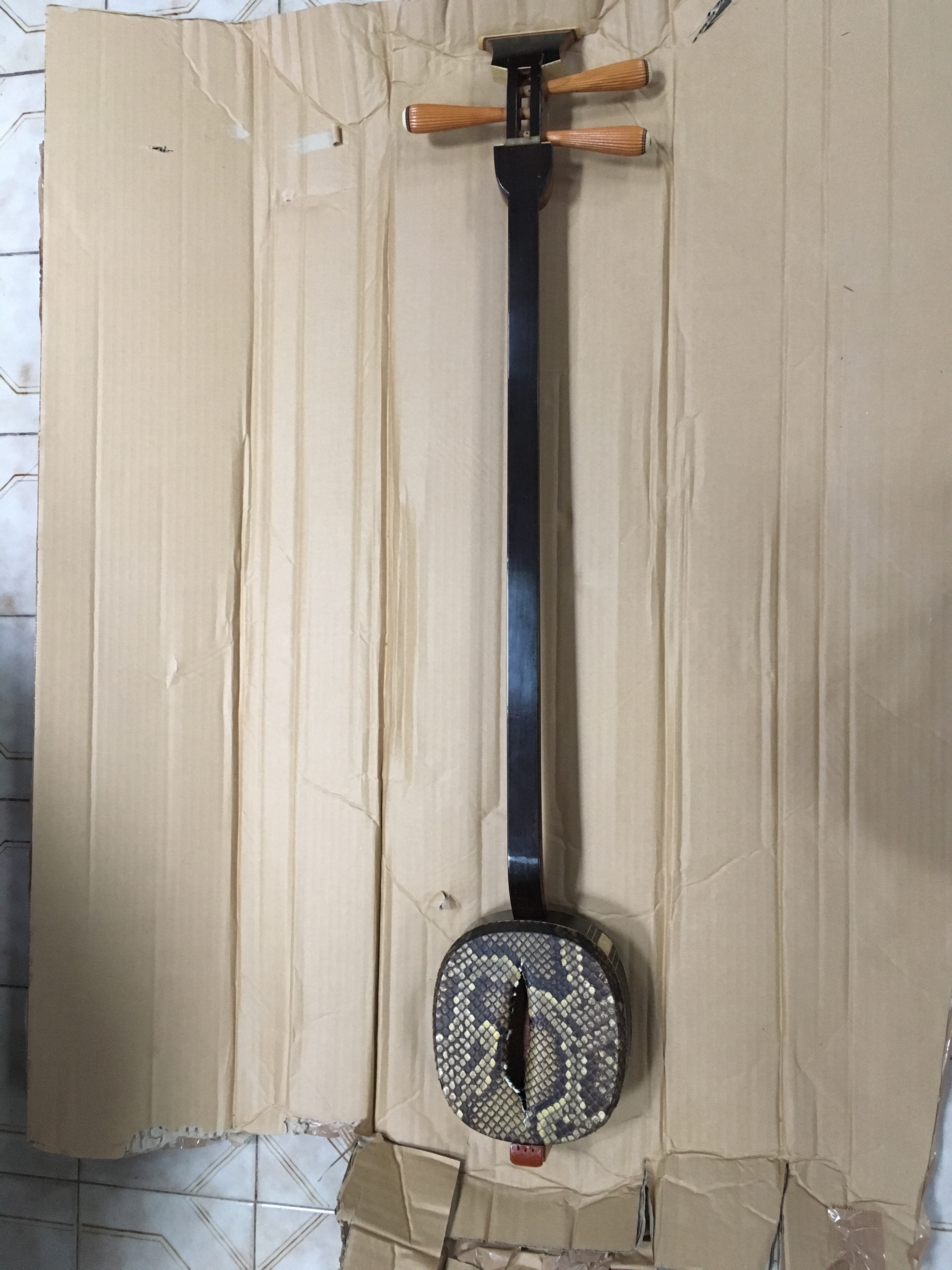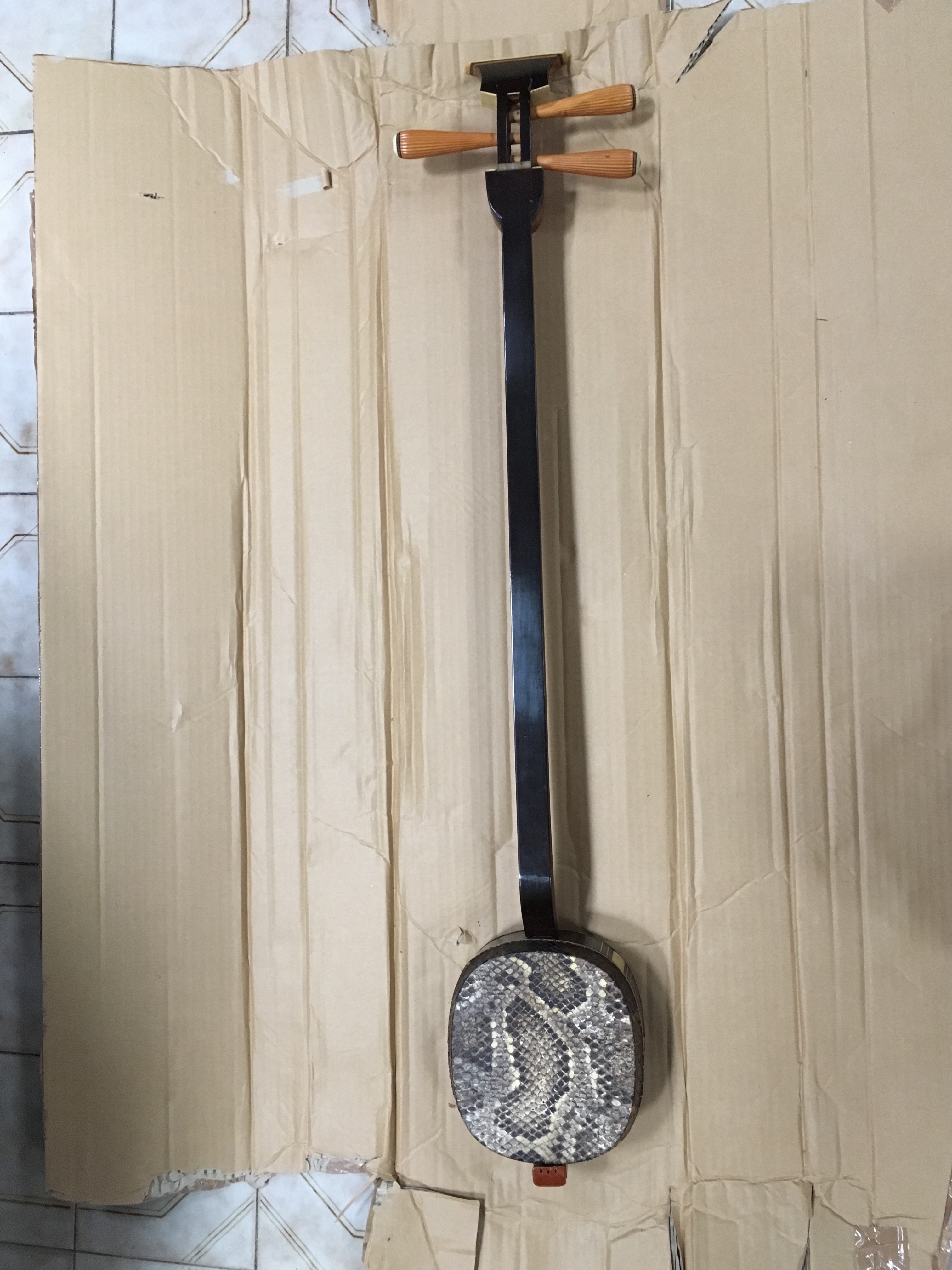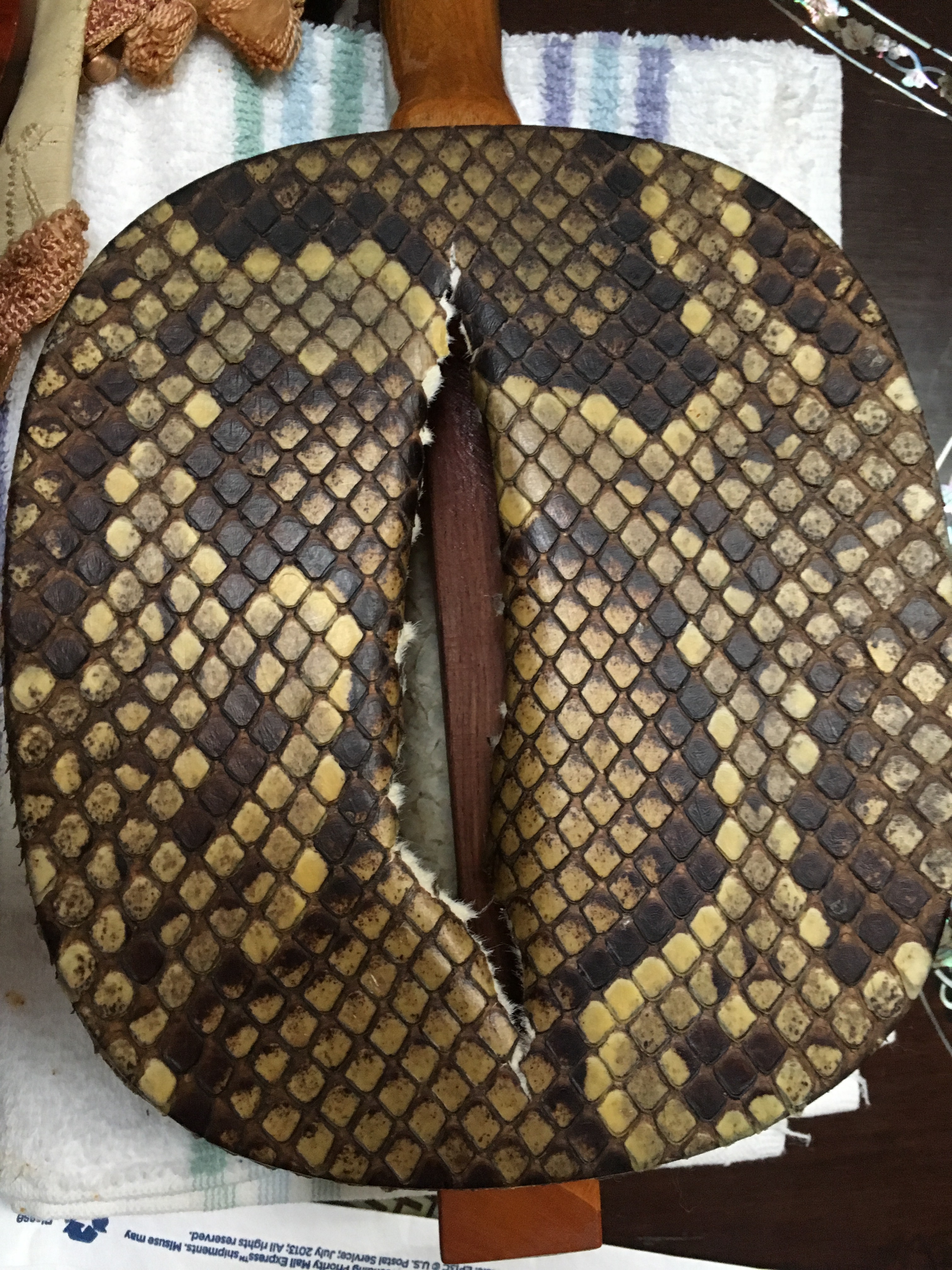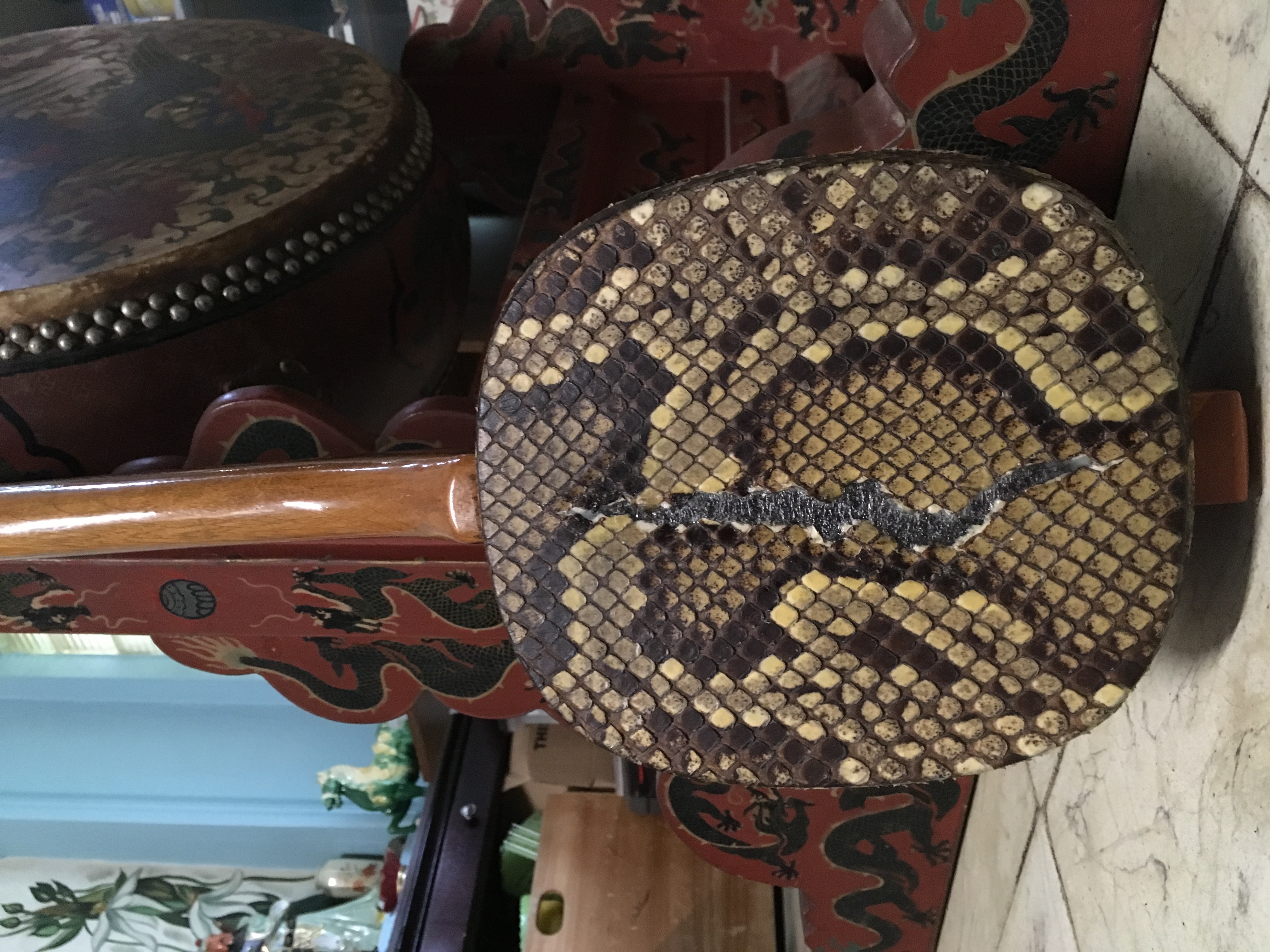(Another eBay project) You probably know that there is a link btw Chinese sanxian - Okinawan sanshin - Japanese shamisen. Maybe you have seen a picture or YT video, but not close-up shots. I’m posting pictures of a vintage Southern Chinese sanxian, which I picked up because I love old junk, esp. with materials like bone. Another musty instrument I am airing out and bringing back to life.
This might interest those of you who are luthiers &/or instrument builder types, to see the construction of this instrument. // Photos show: size comparison to a Jiuta shamisen; (sorry, I don’t know the shamisen terms yet…) where necksao connects to body/dou; it is a 4-piece body (not a 1-piece); friction frets; nut of ? semi-precious stone; wood saddle instead of a corded-neo; bamboo bridge; one piece neck (with slight warp); the colors and lines in the pictures will hint or show how it is constructed, like the head section; and not shown, I think when you buy new strings from China, they are coated wound metal. Real snakeskin head, frontside is torn- ripped down the middle but the backside is tight with two small pin holes (which I have also seen in old Okinawan snakeskin sanshin).
Since the Chinese sanxian’s dou has a flat-level shape where the neck connects, not curved contour like a shamisen, you can easily flip the head around. From broken… flip body around… playable!


Southern Chinese sanxian photos:


